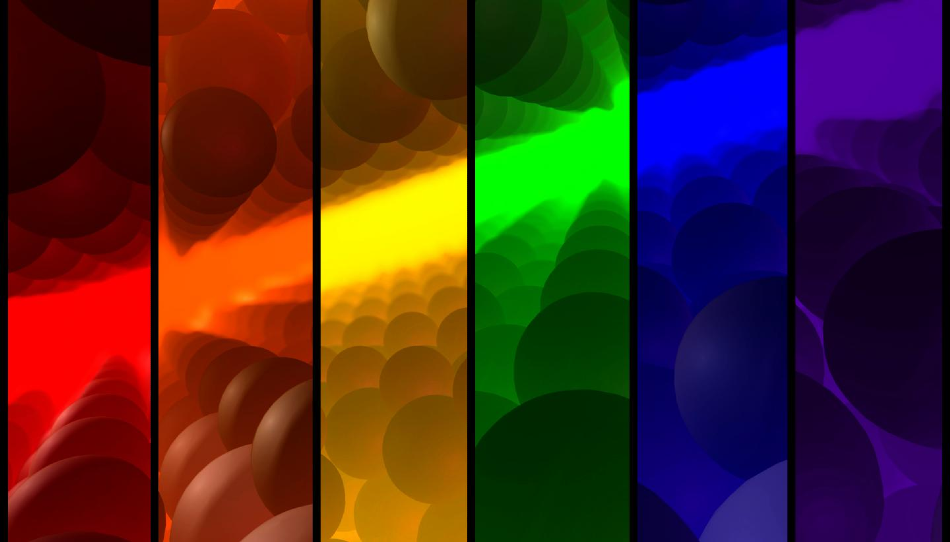Feb 19 2020
Identification of novel, light-emitting semiconductor materials is important to develop an array of electronic devices. However, an even more attractive proposition is to develop light-emitting artificial structures that are customized to particular requirements.
 Artistic view of a junction of different 2D light-emitting materials. Image Credit: © Xavier Ravinet.
Artistic view of a junction of different 2D light-emitting materials. Image Credit: © Xavier Ravinet.
Light emission in a semiconductor takes place only when specific conditions are fulfilled. In association with the University of Manchester, scientists from the University of Geneva (UNIGE) based in Switzerland have now identified an entire class of two-dimensional (2D) materials that have a thickness of just one or a few atoms.
When these atomically thin crystals are integrated together, they have the ability to form structures that produce customizable light in the required color. Published in the Nature Materials journal, the study represents a major step toward the upcoming industrialization of 2D materials.
Light-emitting semiconductors are utilized in industries as varied as medical diagnostics, light-emitting devices (LEDs), and telecommunications. Light emission takes place when a single electron leaps within the semiconductor from a higher level of energy to a lower level of energy. This difference in energy determines the color of the produced light.
To produce light, the electron’s velocity both before and after the jump should be precisely the same—a condition that relies on the particular semiconducting material considered. Only certain semiconductors can be utilized for light emission: for instance, silicon is utilized to develop computers but the same material cannot be used for producing LEDs.
We asked ourselves whether two-dimensional materials could be used to make structures that emit light with the desired colour.
Alberto Morpurgo, Professor, Department of Quantum Matter Physics, Faculty of Science, University of Geneva
2D materials are ideal crystals that, just like graphene, have a thickness of only one or a few atoms. Due to recent technical breakthroughs, different 2D materials can be arranged on top of one another to create artificial structures that act just like semiconductors.
The benefit of such “artificial semiconductors” is that the levels of energy can be regulated by choosing the thickness and chemical composition of the materials that constitute the structure.
Artificial semi-conductors of this kind were made for the first time only two or three years ago. When the two-dimensional materials have exactly the same structure and their crystals are perfectly aligned, this type of artificial semi-conductor can emit light. But it’s very rare.
Nicolas Ubrig, Researcher, University of Geneva
Such conditions are so severe that they do not leave much space to regulate the emitted light. Ubrig belongs to the team headed by professor Morpurgo.
Custom Light
“Our objective was to manage to combine different two-dimensional materials to emit light while being free from all constraints.” professor Morpurgo added.
According to the physicists, if they could identify a group of materials in which the electrons’ velocity both before and after the variation in energy level was zero, then it would be a perfect condition which would invariably fulfill the conditions required to emit light—irrespective of the details of the crystal lattices as well as their relative orientation.
However, many recognized 2D semiconductors possess a zero-electron velocity in the applicable energy levels. Due to the diversity of such compounds, a number of different materials can be integrated, and every combination is a novel artificial semiconductor that produces a particular color of light.
“Once we had the idea, it was easy to find the materials to use to implement it,” stated professor Vladimir Fal’ko from the University of Manchester.
Materials that were utilized in the study included numerous transition metal dichalcogenides (like WS2, MoSe2, and MoS2) as well as InSe. Other promising materials have also been discovered and will be handy for extending the range of colors of the light produced by these novel artificial semiconductors.
Tailor-Made Light for Mass Industrialization
The great advantage of these 2D materials, thanks to the fact that there are no more preconditions for the emission of light, is that they provide new strategies for manipulating the light as we see fit, with the energy and colour that we want to have.
Nicolas Ubrig, Researcher, University of Geneva
This implies that future applications can be developed on an industrial scale, because the generated light is powerful and there is no need to worry about the atoms’ alignment anymore.
The association between the University of Manchester and UNIGE occurred within the framework of the EU Graphene Flagship Project.
Creating custom light using 2D materials
Video Credit: University of Geneva.